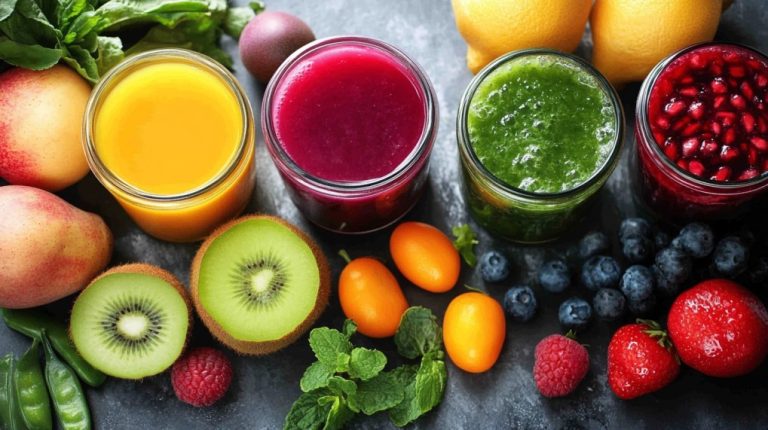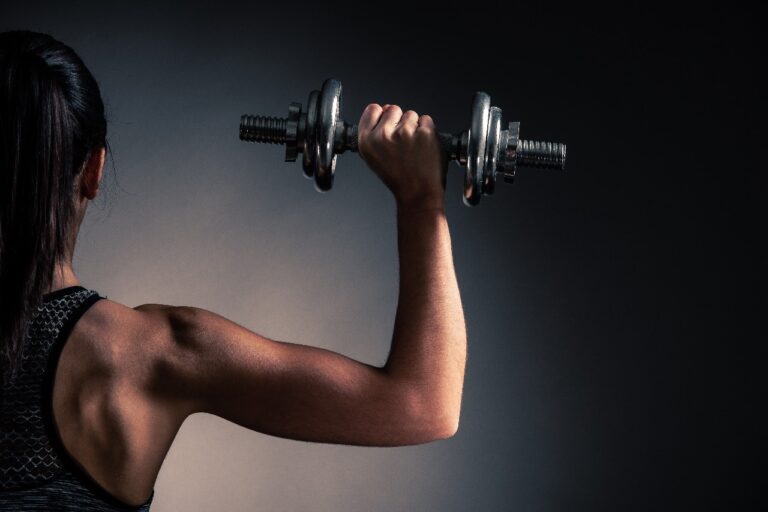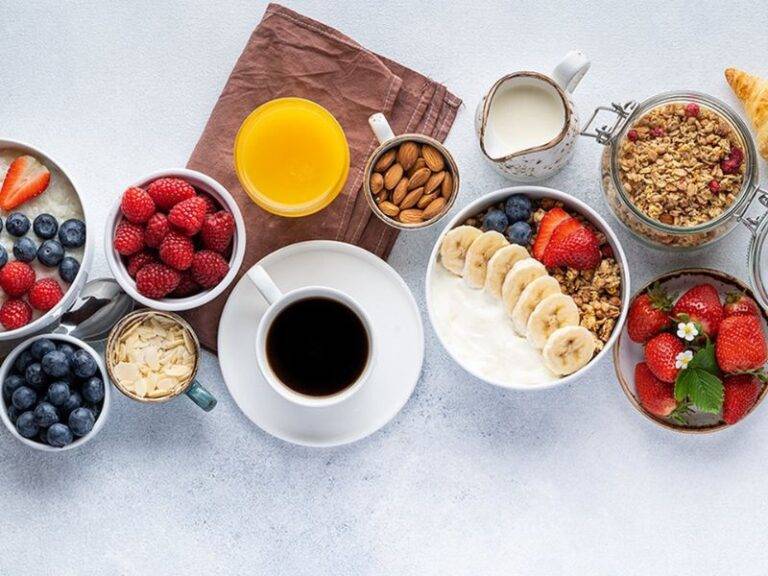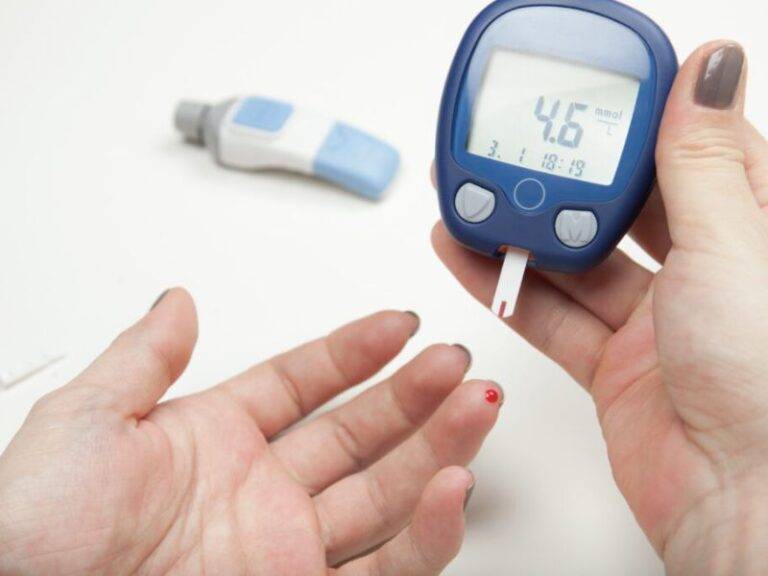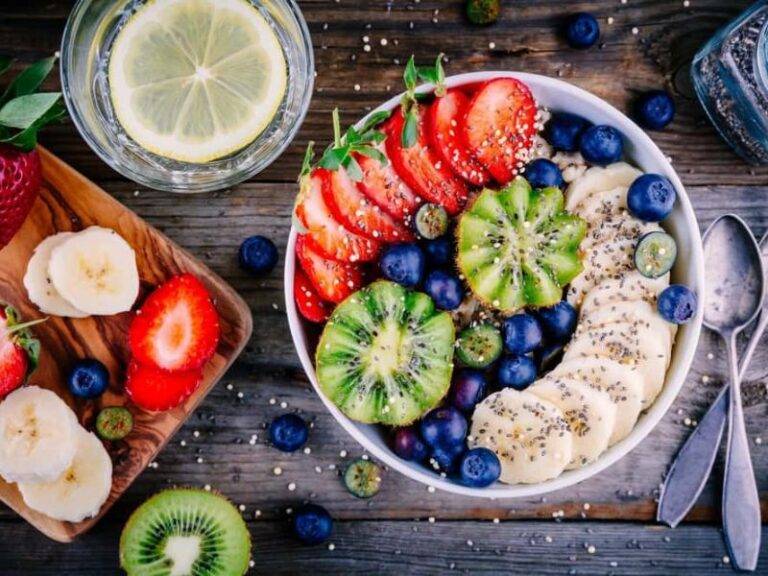Your body weight is dependent upon many different factors. This includes your genes, age, gender, lifestyle, family customs, culture, sleep patterns, and even the place you live and the work you are doing! As a result, many people find it difficult to maintain a healthy weight. In any case, following a good diet and regular exercise can help you keep the best possible physical health as you grow older.
Plant and animal proteins, lipids and oils, complex carbs, and whole-milk dairy products are usually regarded as the best foods for healthy weight gain. However, what you should consume will totally depend on your individual weight and health goals.
Understanding Weight Gain
Our body undergoes various changes as we age. The body’s metabolism or how it acquires energy from meals will also be affected as a part of this process. In order to maintain their ideal weight or keep a healthy weight, adults might need to increase their physical activity level, or reduce their calorie intake.
There are chances for unintentional weight loss in many people. This may occur if you find it difficult to leave the house to get food, experience pain while having food, have a reduced appetite, or forget to have food at proper times.
One of the crucial components of healthy aging is the proper maintenance of a normal weight range.. Elevated body mass index (BMI) in older persons can increase their risk of having severe health issues, just like in other stages of their lives.
Being underweight also raises your risk of health issues. A low body mass index (BMI) may increase your risk of developing severe health issues that might want you to consult a doctor.. Reducing body weight or keeping it at a healthy level can help lower these risks.
Calorie Surplus And Weight Gain
A calorie surplus occurs when our caloric intake goes above our energy burn. When we have a surplus of calories, our body mass rises.
A person trying to maintain their weight should try to consume the same number of calories as they use each day, as opposed to someone wanting to lose weight, who would need to eat less than they burn off each day.
If you are attempting to gain weight or muscle mass, you will need to consume more calories than your body requires and maintain a calorie surplus.
A sufficient calorie surplus—typically 10-15% more calories—is needed for muscle growth to occur. When paired with a proper workout program, “dirty bulking” typically falls outside of this range, which is probably why most people experience significant increases in strength and muscle.
Your body needs more calories when there is a surplus of calories in order to build new muscle. It’s important to remember that there is no one-size-fits-all approach when it comes to calorie surplus. The amount of the calorie surplus and how it impacts a person’s progress depend on a number of variables, including age, weight, exercise schedule, and more.
High-Calorie Foods For Weight Gain
If weight gain is your goal, you should try to eat more calories than you expend over the day by eating smaller, more frequent meals.
Including specific foods in your diet can help you gain weight safely and effectively by providing extra calories and minerals like protein.
These are the top 18 foods that will help you gain weight or muscle in a way that suits your needs.
1. Homemade Protein Smoothies: Nutritious and customizable shakes
Having homemade protein smoothies can be a very nourishing and successful weight-gain method.
You can increase your calorie intake and have complete control over the ingredients when you make your own smoothies.
Here are several delicious options to try. If you are lactose intolerant, you can mix each with two cups, or 470 milliliters (mL), of dairy or soy milk. Compared to other milk substitutes, both are higher in calories and nutrients.
- Chocolate banana nut shake: One banana, one scoop of chocolate whey protein, and one tablespoon (15 mL) of peanut butter or another nut butter should be combined to make a chocolate banana nut shake.
- vanilla berry shake: Mix 1 cup (237 mL) of whole milk Greek yogurt with added protein, ice, 1 scoop of vanilla whey protein, and 1 cup (237 mL) of fresh or frozen mixed berries to make a vanilla berry shake.
- Super green shake: Mix 1 scoop of vanilla or unflavored whey protein with 1 cup (237 mL) of pineapple, 1 avocado, 1 banana, and 1 cup (237 mL) of spinach.
Each of these smoothies has approximately 400–600 calories, a significant protein content, and other vital vitamins and minerals.
2. Dairy Milk: A balanced source of proteins, carbs, and fats.
For many years, people have utilized dairy milk to increase their muscle mass and gain weight.
Along with being a healthy source of calcium and other vitamins and minerals, it offers a balance of proteins, carbohydrates, and fats.
Milk is a great source of protein for muscle building since it contains both casein and whey proteins. A 2018 analysis of the literature revealed that when paired with weightlifting, cow’s milk can help you gain muscle.
Furthermore, compared to other protein sources, milk, or the combination of whey and casein protein, has been shown in trials to promote greater bulk gain.
If you’re training for a quick 149 calories and 8 grams (g) of protein per serving, try drinking 1 cup of whole milk (237 mL) as a snack, with a meal, or before and after an exercise.
3. Rice: Convenient and cost-effective carb option.
Rice is an easy and affordable meal to include in your weight gain plan. Cooked white rice in a cup (158 g) has 204 calories, 44 g of carbohydrates, and very little fat (5Trusted Source).
Additionally, rice has a rather high calorie density, which means that a single meal provides a lot of calories and carbohydrates. This encourages you to eat more, particularly if you don’t feel particularly hungry or finish your meal fast.
You can combine various protein sources with 2-minute packets of microwaveable rice when you’re pressed for time.
Another common technique is to cook a big pot of rice, separate the sections into portions that can be frozen or refrigerated, and then mix it with various proteins and fats to make different meals all week long. A fundamental item that can help with frequent, smaller meals throughout the day is rice.
To enhance flavor, increase caloric content, and provide a protein boost to cooked rice, simply mix in a portion of the following ingredients:
Parmesan cheese and butter
broccoli and cheese scrambled eggs cashews, peanuts, or sesame seeds toasted
Additionally, you can sprinkle a sauce over rice, like:
Alfredo, pesto, and curry
It’s easy to make a rice dish into a whole supper. For a well-balanced lunch, try this wild rice and chicken kale dish (400 calories per serving).
Nuts and Nut Butter: Healthy fats and protein.
4. Red Meat: Muscle-building protein.
Beef and pork are examples of red meats, which are likely among the best foods for growing muscle.
For instance, 228 calories, 24 g of protein, and about 2.5 g of leucine are included in 3 oz (85 g) of steak
The essential amino acid required by your body to promote the synthesis of muscle proteins and create new muscle tissue is leucine
Furthermore, red meats naturally include creatine, a dietary supplement that is essential for maintaining overall health, strength, size, and growth of muscles.
Even while lean meats, such as pig tenderloin, are high in protein and nutrients, you should choose fattier cuts to help you consume more calories because they have more calories than leaner meats.
5. Dark Chocolate: Antioxidant-rich treat.
There are various health advantages and antioxidants in premium dark chocolate.
Cacao, the seed from which chocolate is formed, is found in dark chocolate that has at least 70% cacao content. According to a 2023 study, individuals with kidney illness who consumed 40 g of 70% dark chocolate three times a week for two months had reduced inflammatory markers.
Dark chocolate has a high calorie density, similar to other foods heavy in fat, so you can consume calories from it without consuming much.
A bar weighing 100 g (3.5 oz) and consisting of 60-75% cacao solids offers around 600 calories. It also includes vitamins and substances that promote health, such as antioxidants, fiber, and magnesium.
Beyond simply eating it straight off the bar, there are several ways to enjoy dark chocolate:
Top with cereal
Add it to granola or trail mix.
Dip it into nut butter, mix it with fruit, or dissolve it in hot milk.
Chocolate truffles, energy bites, chocolate peanut butter avocado pudding, and other chocolate sweets are all possible.
Dark chocolate comes in a wide variety of forms and grades in supermarket aisles.
Make sure it’s a premium one that contains at least 70% cacao.
6. Cheese: Flavorful and protein-filled.
For generations, cheese has been a staple food.
It offers fats and calories. There are 110 calories and 7 g of protein in just 1 oz (28 g) of cheddar cheese .
A pair of dice roughly equals one ounce of cheese.
Cheese is a delightful addition that can easily add extra calories to most foods.
Cheese comes in a plethora of types. See which cheeses are to your taste by looking through this list.
Saturated fat and cholesterol are present in many cheeses. All cheeses are heavy in calories and should be eaten in moderation, much like most other foods.
A fantastic way to combine calories, carbs, and protein is with a dish like macaroni and cheese. It can provide a starting point for other nutrient-dense ingredients, including peas or broccoli. Think about adding modest amounts of bacon or other meats, such pulled pork, to provide more calories and protein.
A serving of this mac and cheese recipe has 314 calories and calls for 1 cup (125 g) of shredded cheddar cheese.
7. Potatoes and Complex Carbohydrates: Steady energy release
You can add extra calories at a reasonable price by using potatoes and other complex carbohydrates.
Consistent energy release can result from complex carbs. In addition, they include other food groups and nutrients like fiber, potassium, veggies, and whole grains.
Pick one of these sources of complex carbohydrates, if possible:
Quinoa, Sweet potatoes, corn, buckwheat, squash, and winter root vegetables
Legumes and beans
In addition to providing extra calories, potatoes and other complex carbs raise the amount of glycogen—a complex sugar compound—that is stored in muscle. For the majority of sports and activities, glycogen serves as the primary fuel source.
Resistant starch, which is present in a lot of these carb sources, may support the health of your gut flora .
This substantial lunch recipe for quinoa and roasted sweet potato bowls (336 calories per serving) allows you to have both sweet potatoes and quinoa.
Other methods of calorie-boosting complex carbohydrates are as follows:
- Sour cream added to potatoes
- Incorporating shredded cheese into mashed potatoes or quinoa
- Roasting your veggies with fats like avocado or olive oil
- Putting hummus on crackers, whole grain bread, or baked potatoes; making oatmeal or other hot cereals using dairy or soy milk rather than water
8. Salmon and Oily Fish: Omega-3 and protein
Salmon and oily fish are great providers of protein and essential lipids, like omega-3 fatty acids, just like red meat.
In addition to its many health advantages, omega-3 fatty acids may also reduce the risk of a number of ailments, including heart disease.
A single 3 oz or 85 g portion of deboned wild Atlantic salmon contains approximately 155 calories, 7 g of fat, and 22 g of high-quality protein, which can aid in weight growth or muscle building.
Salmon can be cooked in a number of ways, including grilled, baked, poached, sautéed, and smoked. In addition, you might try raw salmon found in sushi and sashimi, as well as smoked salmon. While canned salmon is a quick and affordable choice, fresh or frozen salmon is usually slightly more expensive.
Take into account these easy and delicious methods to include salmon in your diet:
Tuna salad: To add some extra calories to your standard “tuna” salad, try substituting canned salmon with it. You can also add mayonnaise or olive oil.
Cobb salad: Prepare a Cobb salad by replacing the conventional chicken with canned salmon. Then, add bacon, avocado, hard-boiled egg, lettuce, and tomatoes.
Try this with smoked salmon: Spread cream cheese on whole grain crackers or bread, then top with pieces of cucumber, tomato, or capers.
Salmon salad: Combine asparagus, leafy greens, and whole milk plain Greek yogurt with sour cream, mayonnaise, or other condiments.
9. Avocados: Beneficial fats and nutrients
Avocados are a great source of healthy fats. Avocados have a fair amount of calories compared to other entire fruits. About 365 calories, 30 g of fat, and 17 g of fiber may be found in just one large avocado. Avocados are also rich in many healthy plant components, vitamins, and minerals.
Try to include avocados in salads and omelets.
Avocado toast is among the most widely used applications for avocado. Simply spread some avocado mash on your bread. It really is that simple! For more calories and nutrients, add one egg.
Here are some more delicious ways to eat avocados without gaining too many calories:
- Avocado soups, sandwiches, and fries
- Use sushi as a topping instead of mayonnaise.
- Baked, grilled, and pickled
10. Whole Eggs: Complete protein food.
One of the world’s healthiest foods for gaining muscle is eggs. They offer a delectable, cost-effective, and practical blend of premium proteins and fats. About 74 calories are contained in one large raw egg, weighing 2 oz and containing 50 g of shell.
It’s also crucial to consume the entire egg. In actuality, the yolk of an egg contains practically all of the healthy elements.
For most otherwise healthy people, there’s no need to restrict your egg intake as long as you don’t have an egg allergy or intolerance; you can easily consume three eggs a day if you’d like.
Eggs can be prepared in a variety of ways, such as boiling, poaching, frying, baking, and scrambling.
Put them to use in:
- Salads
- Sandwiches & casseroles
- Baked egg muffins alternatives to bread sweets such as créme brûlée and egg custard (moderated, of course)
- Omelets can be a nutritious and delicious dish that can be consumed any time of the day. To help you reach your daily calorie and nutrition targets, you can top with avocado and sour cream after adding meats, vegetables, and cheese.
For a delicious egg breakfast (or lunch or dinner), try these recipes.
11. Yogurts Made with Whole Milk: Creamy and probiotic-rich.
Another easy and portable snack is whole milk-based Greek yogurt. Greek yogurt has a thicker consistency and is strained. This makes it a fantastic snack on its own or as a topper.
A well-balanced combination of protein, carbohydrates, and fats make up the nutritional profile of Greek yogurt.
Before you add all of your delectable toppings and combos, a 1/2 cup (170 gram) portion of plain, whole milk Greek yogurt will provide you with 15 g of protein and 165 calories.
Yogurt can be used to make high-calorie snacks. These are a handful:
Fruit and yogurt: Mix 1-2 cups of fresh or dried fruit with a container of yogurt. Additionally, you can include coconut flakes, honey, oats, almonds, and seeds.
To make chocolate peanut butter pudding, combine 1-2 cups of yogurt with peanut butter or any other nut butter, 100% cocoa powder, and a sweetener like stevia, honey, or sugar. If you want extra protein, you may also add a scoop of whey.
Yogurt parfait: To make a delightful, nutritionally balanced breakfast or snack, stack 1-2 cups of yogurt, granola, and mixed berries.
Smoothies: To boost the protein level and give any smoothie a creamier, milkshake-like thickness, whole milk Greek yogurt is a great addition.
For even more calories, try fruit-flavored Greek yogurt made with full milk.
12. Fats and Oils: Calorie-dense and versatile
Some of the foods with the highest calorie content on the globe include fats and oils.
One tablespoon (15 milliliters) of olive oil can add 120 calories to sauces, salads, and cookery very quickly.
Important oils consist of:
extra virgin olive oil
avocado oil, coconut oil, walnut oil, and sunflower oil
Having butter coffee or olive oil coffee for breakfast or as a high-calorie snack is one trendier method to consume fats. Another option is to combine a cup of brewed coffee with unsalted butter and coconut oil until it resembles a foamy latte.
Contact Us
Practice Healthy Eating Habits
Eating well-balanced meals and snacks is essential to preserving optimal health and vitality. You can be sure you’re getting the vitamins, minerals, proteins, and healthy fats you need by eating a balanced diet that consists of a range of foods from all the food categories. Include a lot of fruits, vegetables, whole grains, lean meats, dairy products, and dairy substitutes in your everyday diet. Well-balanced meals assist in maintaining a strong immune system, controlling blood sugar levels, and enhancing general wellbeing. Nuts, yogurt, and fresh fruit are examples of snacks that can provide you extra nutrients and stave off hunger in between meals, helping you avoid overindulging.
You may increase your metabolism and keep your energy levels consistent by eating smaller, more frequent meals throughout the day. Five to six smaller meals should be your goal instead of three huge ones. By preventing blood sugar spikes and falls, this strategy lowers the chance of weariness and mood swings. Having smaller, more frequent meals will also help with digestion and keep you feeling full, which will lessen the need to overindulge. To optimize the health advantages, choose nutrient-dense foods like whole grains, lean meats, and veggies. This approach can help control weight and enhance general health by encouraging a balanced nutritional intake. You can also consult a nutritionist for further information
Lifestyle Factors
These are the lifestyle factors that affect weight gain
Exercise And Weight Gain
Exercise on a regular basis is important for controlling weight gain. Physical exercise, such as jogging, cycling, or walking, increases metabolism and burns calories. Overall fitness and muscle mass are also enhanced by exercise. Aim for at least 30 minutes of moderate activity most days of the week because consistency is essential. Exercises for strength training should be added in addition to cardio because gaining muscle improves the body’s capacity to burn calories even when at rest. Frequent exercise also lowers stress, elevates mood, and facilitates better sleep—all of which are beneficial for preserving a healthy weight.
Sleep And Weight Gain
Getting enough sleep is essential to controlling weight gain. Hormones that control hunger are upset by sleep deprivation, which increases appetite and causes desires for unhealthy meals. Insufficient sleep also lowers energy levels, which makes it more difficult to exercise and stay active. Try to get 7–9 hours of sleep per night without interruptions to help maintain a healthy weight and metabolism. Limit screen time before bed, make a tranquil environment, and establish a regular sleep pattern. Maintaining healthy sleep habits promotes overall wellbeing, speeds up the body’s healing process, and lowers stress levels, all of which assist prevent weight gain.
Controlling Stress and Gaining Weight
Reducing stress is crucial to avoiding weight gain. Cortisol, a hormone that increases appetite and causes the body to retain fat, especially around the abdomen, is released when there is ongoing stress. Cortisol levels can be lowered with the aid of efficient stress-reduction methods including deep breathing exercises, mindfulness, and meditation. Stress management also involves getting enough sleep and engaging in regular physical activity. You may reduce stress even more by engaging in hobbies, spending time with loved ones, and learning relaxation techniques. You can avoid stress-related weight gain and continue to lead a healthier lifestyle by managing your stress levels.
The Role Of Weightlifting and Physical Activity
Exercise, especially weightlifting, is crucial for controlling weight and enhancing general health. Gaining muscle mass through weight lifting speeds up metabolism and improves calorie burning even while the body is at rest. It also improves physical strength and fortifies bones. Optimizing metabolic expenditure and improving cardiovascular health can be achieved by combining weightlifting with aerobic exercises like swimming, jogging, or walking. Frequent physical activity raises mood, improves sleep quality, and lowers the risk of chronic diseases. Combine aerobic and strength training activities in your regimen to help you maintain your weight and stay healthy in the long run.
Make Informed Choices For Gradual, Sustainable Weight Gain
Healthy weight gain requires stress management, regular exercise, and restful sleep. Increase your metabolism and gain muscle by exercising with weights, running, and walking. To control hunger hormones and preserve energy, try to get between seven and nine hours of sleep every night. Reduce stress by practicing mindfulness and relaxation techniques to avoid gaining weight as a result of stress. Combining these healthful practices enhances general wellbeing and aids in maintaining a healthy weight.
You can gain weight gradually and sustainably by making well-informed diet and lifestyle decisions. Have well-balanced meals that include a variety of carbohydrates, healthy fats, and proteins as we have mentioned. Choose nutrient-dense foods instead of processed ones.
Remember, achieving long-term success requires consistency and small adjustments over time. You may enhance your general health and gain weight in a sustainable way by making these well-informed decisions.


